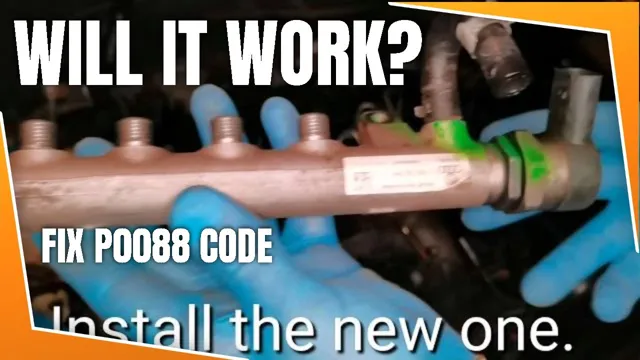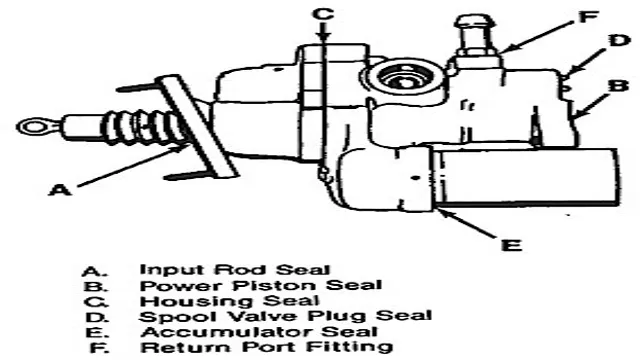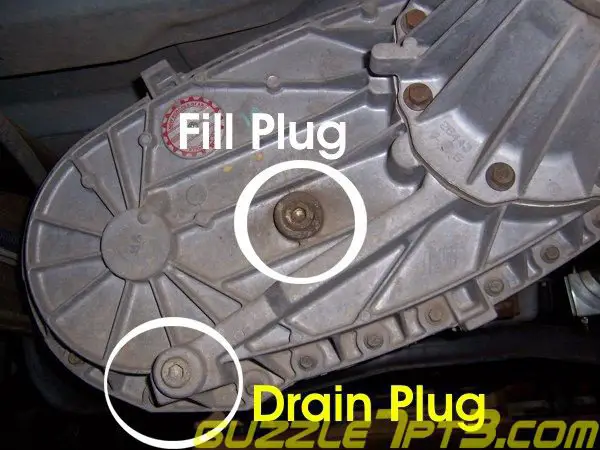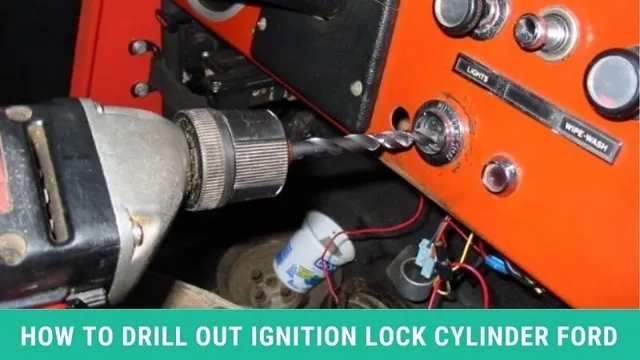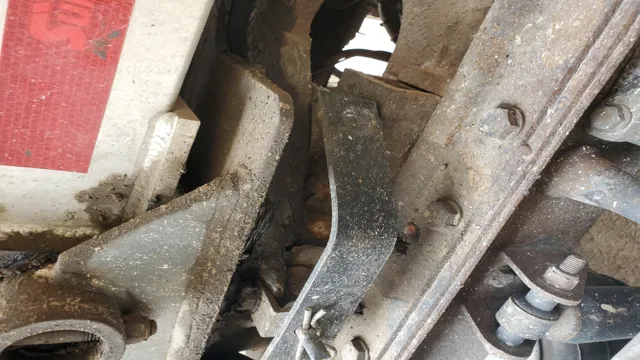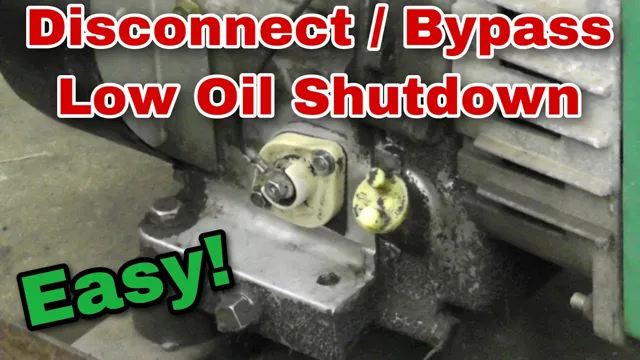Master the Art of Fixing P0088 Code: A Comprehensive Guide for Car Enthusiasts
Are you facing the P0088 code issue with your vehicle? It’s a common problem that many car owners encounter at some point in their lives. The good news is that it’s fixable, and in this comprehensive guide, we’ll walk you through everything you need to know to get your vehicle back in tip-top shape. You see, the P0088 code is an indication of a fuel pressure problem.
When this occurs, it means there is too much pressure in the fuel system. It could be due to a malfunctioning fuel pump or a defective fuel pressure regulator. Whatever the case, it is crucial to address this issue to avoid further damage to your vehicle.
In this post, we will dive into what the P0088 code means, common symptoms, and how to diagnose the issue. We will also cover how to fix the problem, including steps to follow and tools required. Whether you are handy with vehicle repairs or not, we’ve got you covered.
Our goal is to help you understand the problem, provide a solution, and give you the confidence to fix it on your own or take it to a professional. So, buckle up, and let’s get started on fixing the P0088 code on your vehicle.
Understanding the P0088 Code
If you’ve come across the P0088 code, it can be a frustrating experience. This code indicates a problem with your vehicle’s fuel rail system, specifically with the fuel pressure being too high. There are a few potential causes for this issue, including a faulty fuel pressure regulator, a clogged fuel filter, or a malfunctioning fuel pump.
Fortunately, there are steps you can take to fix the P0088 code and prevent further damage to your vehicle. First, you’ll want to check the fuel pressure regulator and replace it if necessary. Next, replace the fuel filter and inspect the fuel pump for any signs of damage or malfunction.
It’s important to act quickly to resolve the P0088 code, as it can lead to costly repairs if left untreated. By following these steps, you can effectively fix the P0088 code and ensure your vehicle is running at its best.
Definition and Causes
The P0088 code is a diagnostic trouble code that indicates there is an issue with the fuel rail pressure sensor circuit. This code is common in both gasoline and diesel engines and can be caused by a variety of factors, including a faulty fuel pressure sensor, a malfunctioning fuel pump, a clogged fuel filter, or even a damaged fuel pressure regulator. The code is usually triggered when there is either too much or too little fuel pressure in the fuel system.
Common symptoms of the P0088 code include engine misfires, stalling, and poor acceleration. It is important to address this issue promptly, as it can lead to more serious problems down the line. Regular maintenance and cleaning of the fuel system can prevent the P0088 code from occurring in the first place, and early diagnosis and repair can prevent more costly and time-consuming repairs later on.
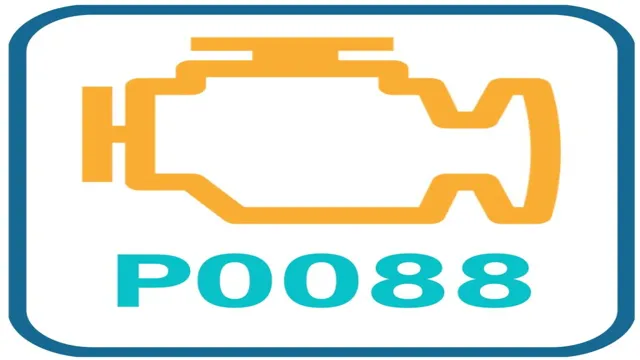
Effects of P0088 Code
The P0088 code is a diagnostic trouble code (DTC) indicating a fuel system problem. In essence, it means that the fuel pressure in the system is too high, resulting in an imbalance. This imbalance can cause a variety of issues, such as difficulty starting the vehicle, hesitation during acceleration, and even stalling.
Additionally, high fuel pressure can cause damage to other components of the fuel system, including the fuel pump, fuel injectors, and pressure regulator. So, if you experience any of these symptoms or get a P0088 code, it is crucial to diagnose and repair the issue promptly to avoid further damage to your vehicle. Ignoring the problem can ultimately lead to costly repairs and even engine failure.
So, make sure to take action as soon as possible and get your vehicle checked by a qualified mechanic.
Diagnosing P0088 Code
If you have a check engine light on and have received the dreaded P0088 code, it’s important to diagnose and fix the issue as soon as possible. This code indicates a problem with the fuel rail pressure sensor and can often cause poor performance and reduced fuel economy. To diagnose the issue, you’ll need to check the fuel pressure and make sure the fuel pump is working correctly.
It’s also important to check the fuel lines for any leaks or clogs, as these can cause low fuel pressure. Once you’ve identified the problem, fixing it can be as simple as replacing a faulty part or cleaning out a clogged fuel line. Whatever the solution, it’s important to make the repair quickly to avoid further damage to your vehicle’s engine.
By taking the time to properly diagnose and fix the P0088 code, you can ensure that your car runs smoothly and reliably for years to come. So, if you’re wondering how to fix P0088 code, start by checking your fuel pressure and fuel lines, and don’t hesitate to consult a mechanic if you need help.
Common Symptoms to Look For
When your vehicle’s check engine light comes on, it can be a bit overwhelming trying to figure out what the problem is. However, if the code is P0088, there are a few common symptoms to look out for that can help diagnose the issue. One of the most noticeable symptoms is a loss of power when accelerating.
You may also notice that your engine is running roughly or even misfiring. Another common sign is a decrease in fuel efficiency. If you notice any of these symptoms, it’s important to have your vehicle checked as soon as possible to prevent further damage.
A qualified mechanic can use diagnostic tools to check for the P0088 code and determine the underlying issue. This code typically indicates a problem with the fuel pressure regulator or fuel system, and ignoring it can lead to serious engine damage down the road. So, if you experience any of these symptoms, don’t hesitate to have your vehicle checked out.
Using OBD-II Scanner to Diagnose P0088 Code
If you’re having trouble with the P0088 engine code, using an OBD-II scanner can help diagnose the problem. This code indicates that there’s an issue with the fuel rail/system pressure that could be caused by a variety of things. One common cause is a defective fuel pressure regulator or fuel pump.
To use an OBD-II scanner, simply plug it into the diagnostic port under your dashboard. The scanner will retrieve the code and provide a description of what it means. You can then use this information to troubleshoot the issue.
Remember to take safety precautions and follow the instructions provided with your scanner. With a little effort, you’ll be able to diagnose and fix the problem behind the P0088 engine code.
Inspecting Fuel System Components for Technical Issues
If you’re experiencing technical issues with your fuel system, one possible cause could be a P0088 diagnostic code. This code indicates a problem with the fuel pressure regulator, which could be causing your engine to run lean or rich. To diagnose this issue, you’ll need to inspect your fuel system components, looking for any signs of damage or wear.
Check your fuel pump, fuel lines, and fuel pressure sensors to ensure that they’re working correctly. If you notice any abnormalities, it may be time to replace these parts to get your fuel system up and running again. Don’t ignore any fuel system issues, as they can eventually lead to more significant problems down the line.
With proper maintenance and care, your fuel system will keep your engine running smoothly and efficiently.
Fixing P0088 Code
If you’re wondering how to fix P0088 code, then you’re in the right place. This code indicates that there is an issue with the fuel rail pressure too high sensor, which can lead to reduced engine performance and even potential damage if left unfixed. One common cause of this code is a defective sensor, which may need to be replaced.
However, before jumping to conclusions, it’s essential to check for other potential causes such as a clogged fuel filter or a malfunctioning fuel pump. Regular maintenance and keeping an eye on the fuel system can help prevent P0088 and other related codes from occurring in the first place. It’s always best to have a trained and qualified mechanic diagnose and fix any issues to ensure optimal vehicle performance and safety.
Cleaning or Replacing Fuel Filters
If your car’s engine is throwing a P0088 code, it’s time to take a closer look at your fuel system. This code indicates a problem with the fuel pressure sensor, which can be caused by a clogged or dirty fuel filter. The fuel filter is responsible for keeping contaminants out of your engine’s fuel system, but if it becomes clogged, it can reduce fuel flow and cause pressure to build up in the fuel system.
To fix the P0088 code, you’ll need to clean or replace your fuel filter. This is a relatively simple process that can be done at home with a few basic tools. Start by locating your fuel filter, which is typically located along the fuel line under the car.
Use a wrench to loosen the clamps and remove the old filter. If it’s clogged with dirt and debris, replace it with a new one. If it’s just dirty, you can clean it by soaking it in a cleaning solution or using a compressed air hose to blow out any debris.
Once your new filter is in place or your old one is cleaned, reattach the clamps and test your engine to ensure the P0088 code is no longer present. By properly maintaining your fuel filter, you can ensure that your engine runs smoothly and efficiently, without any unwanted codes or issues. So, don’t neglect your fuel filter – it’s a small part that plays a big role in your vehicle’s performance.
Inspecting Fuel Pressure Regulator and Fuel Injectors for Malfunctioning
Are you experiencing a P0088 code when driving your vehicle? This code indicates a problem with the fuel pressure regulator or fuel injectors. The fuel pressure regulator is responsible for maintaining the proper pressure in the fuel system, while the fuel injectors are responsible for delivering the correct amount of fuel to the engine. If either of these components is malfunctioning, it can cause the P0088 code to appear.
To determine which component is causing the issue, you can start by inspecting the fuel pressure regulator. Check for any damage or leaks, and ensure that it is functioning properly. If the fuel pressure regulator appears to be in good condition, you may need to inspect the fuel injectors.
Look for any signs of clogs or leaks, and make sure that they are delivering the correct amount of fuel to the engine. If you are unsure about how to inspect these components or fix any issues that you find, it may be best to take your vehicle to a mechanic. They can properly diagnose the problem and offer solutions to fix it.
By taking care of any issues with the fuel pressure regulator or fuel injectors, you can ensure that your vehicle runs smoothly and avoids any further issues. Don’t ignore the P0088 code – take action to fix the problem and keep your vehicle in top condition.
Replacing Faulty Fuel Pumps
If you’re experiencing the P0088 code on your vehicle, it’s time to inspect your fuel system. This code means there’s an issue with the fuel rail pressure and often indicates a problem with the fuel pump. Replacing a faulty fuel pump can be a daunting task, but it’s essential for the proper functioning of your vehicle.
It’s important to choose a high-quality fuel pump to ensure that it will last and perform well. Think of it like the heart of your car – you want it to be in top shape! Additionally, it’s also important to seek professional guidance if you’re unsure of the process or feel uncomfortable making the repair yourself. Remember, safety is key when working with fuel.
Taking care of your fuel system and replacing a faulty fuel pump can help prevent larger issues down the road and keep your car running smoothly.
Preventing P0088 Code from Recurring
When dealing with a P0088 code, it can be frustrating to have it keep coming back. Luckily, there are steps you can take to prevent this issue from recurring. Firstly, ensure that you have a clean fuel system, with no blockages or issues with the fuel pump.
It’s also important to regularly check and replace the fuel filter, as a clogged filter can cause the fuel pressure to drop and trigger the P0088 code. In addition, make sure your vehicle is properly tuned and that all sensors are functioning correctly. This includes the oxygen sensor and the fuel pressure sensor, which are both crucial for maintaining the correct fuel-to-air ratio.
Staying on top of these maintenance tasks can help you avoid the headache of a persistent P0088 code.
Scheduled Maintenance and Inspections
Scheduled Maintenance and Inspections are important when preventing the P0088 code from recurring in your vehicle. This code is related to the fuel rail or fuel system, indicating that there may be a problem with fuel pressure. Regular inspections of the fuel system, including the fuel filter and pump, can help prevent issues with fuel pressure and other related components.
In addition to regular maintenance, it’s important to be mindful of the type of fuel you’re using as well as your driving habits. Staying on top of scheduled maintenance and inspections not only helps prevent the recurrence of the P0088 code but also ensures the overall health and longevity of your vehicle. By keeping up with this routine, you can avoid costly repairs down the line and avoid any unexpected breakdowns while on the road.
Using Quality Fuel and Additives
Preventing the P0088 code from recurring can be done with proper fuel and additive use. Quality fuel prevents contaminants and debris from clogging the fuel system and helps it to run smoothly and efficiently. Using additives such as cleaners and conditioners can help keep the fuel system in prime condition, preventing issues that lead to the P0088 code.
Additionally, addressing any underlying issues such as a faulty fuel pressure regulator or fuel pump can prevent the code from recurring. Keeping up with routine maintenance and inspections can also catch issues early on before they result in code triggers. By utilizing quality fuel and proper additives, vehicle owners can maintain their fuel systems and prevent P0088 code recurrence.
Conclusion
In conclusion, fixing the P0088 code requires a combination of technical expertise and good old-fashioned detective work. Start by checking the fuel pressure regulator and fuel pump for any signs of wear or malfunction. If those components are functioning properly, move on to inspecting the fuel lines, injectors, and filters.
And if all else fails, don’t hesitate to bring in a professional mechanic to help you solve the mystery of the P0088 code. Remember, solving this code isn’t just about getting rid of a pesky engine light – it’s about ensuring the long-term health and performance of your vehicle. So, roll up your sleeves, grab your tool kit, and let’s get tinkering!”
FAQs
What does the P0088 code indicate?
The P0088 code indicates a problem with the fuel rail pressure sensor or fuel delivery system.
How can I diagnose the P0088 code on my vehicle?
A diagnostic scan tool can be used to check the fuel pressure readings. The fuel pressure sensor, fuel pump, fuel filter, and fuel lines should also be inspected for any signs of damage or malfunction.
What are the common reasons for a P0088 code to appear?
Common reasons include a faulty fuel pump, clogged fuel filter, damaged fuel lines, or a malfunctioning fuel pressure sensor.
Can I fix the P0088 code myself?
It is possible for experienced DIYers to fix the issue themselves. However, it is recommended to have a professional mechanic diagnose and fix the problem since it involves the fuel delivery system.

